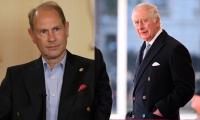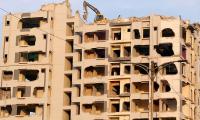Big cities are considered to be symbols of national grandeur and pride in our contemporary world. Most big cities across the world, such as Tokyo, Shanghai, New York, Moscow, London and Mumbai (to mention a few), have become the identity of national prosperity and wellbeing.
Increasing skyscrapers and the continuous vertical expansion of cities is treated as the national will to grow and prosper. Governments invest billions to develop and upgrade social and physical infrastructure in big cities, making them the ideal destinations for national and international private investors. These investors put in money with the hope that they will gain maximum economic returns on their investment.
The outward grandeur of concrete and steel megastructures attracts the wealthy to accumulate more wealth. As a result, vertical growth starts to define the economic and social ideals of nations that, in turn, camouflage the miseries of millions of the downtrodden whose plight remains unnoticed in a topsy-turvy, post-truth world.
The external splendor of big cities hides endemic poverty and inequality in society. This is partly because metropolitan glamour attracts the corporate media, which shapes the perception of a country through its best metropolis, with high-rises and nonlinear postmodern architecture. This is driven by commercial pursuits through which the real world of the people vanishes from the public sight and memory. Who cares what happens within a coarse, mundane and hapless rural life, which doesn’t fit within the exalted image of a country on the path of progress.
The pace of life in a big city doesn’t offer much luxury to create good art, and celebrate human intellect, creativity and the inherent potential to excel in the field of one’s choosing. Beneath the individualism of a big city, there is a strong structural control that is much more lethal than the tyranny of collectivism. The fraying social order, the vanishing arts, shrinking social and physical spaces, and weak and ephemeral perspectives of politics and the economy are the key features of a growing city.
The beneficiaries of metropolitan culture – nouveau-riche media anchors, corporate professionals, and conventional civil-society practitioners – contribute to this image of a country. Imagine what the image of ‘shining India’ would have been if footage of dying farmers was shown in the mainstream media. The media blackout of rural poverty in India, where thousands of farmers commit suicide each year due to indebtedness and excruciating living conditions, results in the stories and experiences of a vast majority of the populations being excluded.
This problem is not unique to India. Tales of poverty in the suburbs of New York remain unheard of in the outside world. Poverty and social exclusion in parts of East and South London cannot be juxtaposed with the fancy reports of the bullish and bearish trends in the London Stock Exchange. For the global corporate media, building the image of prosperity and exercising control over people’s perceptions through concocted success stories have been the main aspects of the post-truth world.
No one has a monopoly over truth, but a few have a monopoly over manufacturing the quasi-truths of the post-truth world. Post-truth is not about the end of truth. It is more about the uncertain, unsubstantiated and concocted truth of the simulated world of technology.
However, this doesn’t belittle the certainty of truth. It merely diffuses the politics of poverty. The politics of the belly is an all-pervasive phenomenon where everyone vies for the larger piece of the pie. The most appalling situation emerges when some bellies grow too big by swallowing other people’s share. Disparity breeds disparity and poverty continues to shape the lives of millions of people in the outskirts of opulent metropolitan centres.
Poverty and prosperity live side by side. But the latter becomes more pronounced in the eyes of the world while the former remains unreported and unresolved. Those who still insist on the advent of the post-truth world are either disoriented, easygoing or presumptuous advocates of surrealism, or corporate media tycoons who get paid to not show the truth.
For instance, rural poverty in India is an undeniable truth that can potentially tarnish the country’s corporate face if the media starts reporting on the agony of farmers and the rural poor. The proponents of post-truth would never venture into such complexities and contradictions because serious thought, intellectual intrepidity and a coherent ideological framework are required to make sense of poverty and prosperity growing together.
Even in the richest cities of the world, when poverty and prosperity grow together, they face the political tremors of change. This is happening across Europe nowadays. Madrid, Paris and London have already seen a wave of violent protests and the movement is now spreading to other cities of Europe.
The concentration of wealth in big cities makes them the most wanted destinations for the poor, who start migrating to big cities in search of employment and a better quality of life. Large cities aren’t only the hub of economic activities, but also the centres of political expression, conflicts, cultural exchanges and social stratification.
Big cities continue to grow in the developing world, both vertically and horizontally, in the absence of basic social services and economic opportunities in rural areas. The 10 fastest-growing cities of the world are in India where rural infrastructure is primitive and underdeveloped. The mass exodus of an unskilled workforce from rural areas to urban centres creates pressure on the existing resources of cities.
The huge army of unskilled workforce starts to build ghettos in the suburbs of big cities, with very limited employment opportunities in a high-tech modern city. The poverty-ridden ghettos of the rural poor become the hub of informal economic activities and the breeding ground of extremist ideologies.
We can feel the growing discontent within Pakistan’s big cities as well, even though the country is far behind in the global race to build big cities. Karachi, the largest city of the country, looks like a dumping ground of the filth of exploitative politics and extractive economics. Karachi today presents the picture of a post-conflict metropolis in some Sub-Saharan African country.
Despite being the most important commercial hub and the backbone of the national economy, Karachi faces insurmountable problems, with a decaying social, physical and economic infrastructure. Even if Pakistan has the will to grow like other developing economies, its largest city doesn’t represent that will.
Once famous as the city of lights, Karachi has now turned into a city of dusty roads, sprawling urban slums, and smoke-emitting transportation, and a bastion of prowling gangs in search of an easy prey in the daylight to make easy money. Barring a few localities inhabited by the affluent, the city is rapidly deteriorating into a gigantic slum, with no water, energy and basic human needs.
The critique of a large capitalist metropolis doesn’t apply to Karachi. What is unique about this city is the resilience of its citizens who have nurtured the ways of living life with contentment and hope. Karachi has all the potential to become one of the best economic hubs of international trade and commerce because of its geographical location, relatively educated population, and pluralistic social structure.
Being a growing city may not bring prosperity to the millions of poor people in Karachi, but it could at least create the possibility to leapfrog the age of feudalism and curb primitive nationalism.
The writer is a senior social
development and policy adviser, and a freelance columnist based in Islamabad.
Email: ahnihal@yahoo.com
Twitter: @AmirHussain76
A representational image showing residents walking at a wholesale market in Karachi. — AFP/FileOnce again there is...
A representational image showing late Pakistani human rights activist and Supreme Court lawyer Asma Jahangir. —...
A representational image showing a security personnel sanding guard beside a ship carrying containers at Gwadar port....
A health worker administers polio vaccine drops to a child during a door-to-door polio vaccination campaign in Lahore,...
Armed militants of the banned Tehreek-e-Taliban Pakistan pose for a photograph in Orakzai Agency. —...
An aeroplane of the national flag carrier of Pakistan is seen in this file photo. — AFPWhile Pakistan considers...







